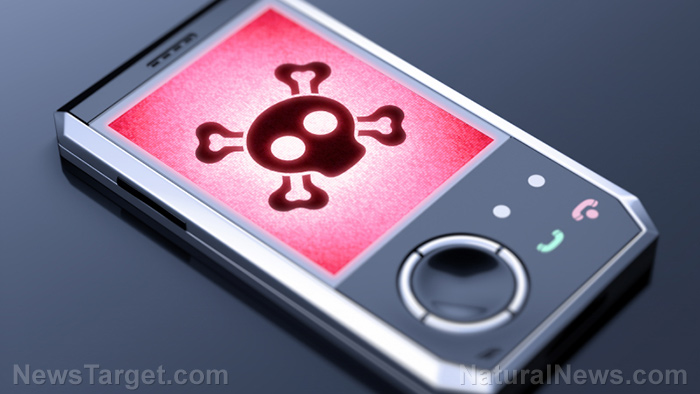 Parler
Parler Gab
Gab
- A consortium of scientists (ICBE-EMF) has issued a report claiming the World Health Organization's (WHO) reviews on cellphone radiation safety are critically flawed and provide no credible assurance that the technology is safe.
- The ICBE-EMF alleges the WHO reviews used unreliable methods, primarily by inappropriately applying meta-analyses to dissimilar studies, which can obscure evidence of harm. They also raise concerns about potential industry bias and conflicts of interest among the review authors.
- Despite the flawed methods, the ICBE-EMF notes that the WHO's own reviews found evidence linking radiofrequency radiation to specific cancers in animals (corroborated by human studies) and reduced male fertility, but these findings are being downplayed.
- The report argues this downplaying stems from an outdated "thermal-only paradigm," which incorrectly assumes radiation is harmless unless it heats tissue. Modern science shows biological harm can occur at lower, non-thermal levels.
- The ICBE-EMF demands the WHO recommission its reviews with proper methods and conflict-free authors. They urge a precautionary approach, shifting the burden of proof to the industry to demonstrate safety, especially for vulnerable populations.
Evidence of harm ignored
Despite the identified flaws, the ICBE-EMF report notes that the WHO's own reviews still uncovered troubling evidence. One systematic review, which appropriately avoided a flawed meta-analysis, concluded with high certainty that cellphone radiation exposure causes two types of cancer in animals: malignant gliomas in the brain and malignant schwannomas in the heart. The review explicitly noted that human studies had previously found both of these same tumor types. Another WHO-backed review found that RF radiation exposure was linked to reduced male fertility. "The study links maternal cellphone use during pregnancy to an increased risk of behavioral problems in children," said BrightU.AI's Enoch. "Furthermore, the electromagnetic radiation from cellphones is compared to microwave radiation and is linked to an increased cancer risk." The ICBE-EMF scientists argue that these findings within the WHO's own data are being glossed over. Instead of highlighting these potential risks, the overall tenor of the WHO's effort has been to downplay concerns, a stance the ICBE-EMF attributes to the deeply ingrained "thermal-only paradigm." This decades-old doctrine, which forms the basis for current U.S. Federal Communications Commission (FCC) safety standards, assumes that RF radiation is harmless unless it delivers enough energy to heat body tissue. A growing body of peer-reviewed science, including a 2022 paper from the ICBE-EMF, has refuted this, showing biological harm can occur at much lower, non-thermal levels.A call for accountability and precaution
The ICBE-EMF is demanding that the WHO recommission the reviews, this time requiring authors to follow established best practices and to fully disclose any potential conflicts of interest. They are urging regulatory authorities internationally to consider the current WHO-recommended safe exposure limits as potentially too high to protect the public fully. Specifically, they call for heightened protections for vulnerable populations, including pregnant women, children, and individuals with electromagnetic hypersensitivity. The scientists argue that until a thorough and independent review of the evidence is completed, a precautionary approach is not just wise but necessary. They insist that the burden of proof must shift; instead of the public having to prove that wireless radiation is dangerous, the industry should be required to demonstrate conclusively that it is safe. Watch and learn about EMF radiation and its impact in an interview by Health Ranger Mike Adams with Nick Pineault. This video is from the BrightLearn channel on Brighteon.com. Sources include: ChildrensHealthDefense.org ICBE-EMF.org EHN.org BrightU.ai Brighteon.comU.S. slaps SANCTIONS on Colombian President Gustavo Petro
By Ramon Tomey // Share
EXPOSED: Venezuela funded BLM and Antifa to destabilize America, defector claims
By Kevin Hughes // Share
U.S. sanctions on Russia’s oil industry spark global reactions, market volatility
By Gregory Van Dyke // Share
Google’s quantum breakthrough: Willow chip solves physics problem 13,000x faster than supercomputers
By Belle Carter // Share
ICJ condemns Israel as data reveals only 15% of promised aid is reaching Gaza
By Zoey Sky // Share
Governments continue to obscure COVID-19 vaccine data amid rising concerns over excess deaths
By patricklewis // Share
Tech giant Microsoft backs EXTINCTION with its support of carbon capture programs
By ramontomeydw // Share
Germany to resume arms exports to Israel despite repeated ceasefire violations
By isabelle // Share









